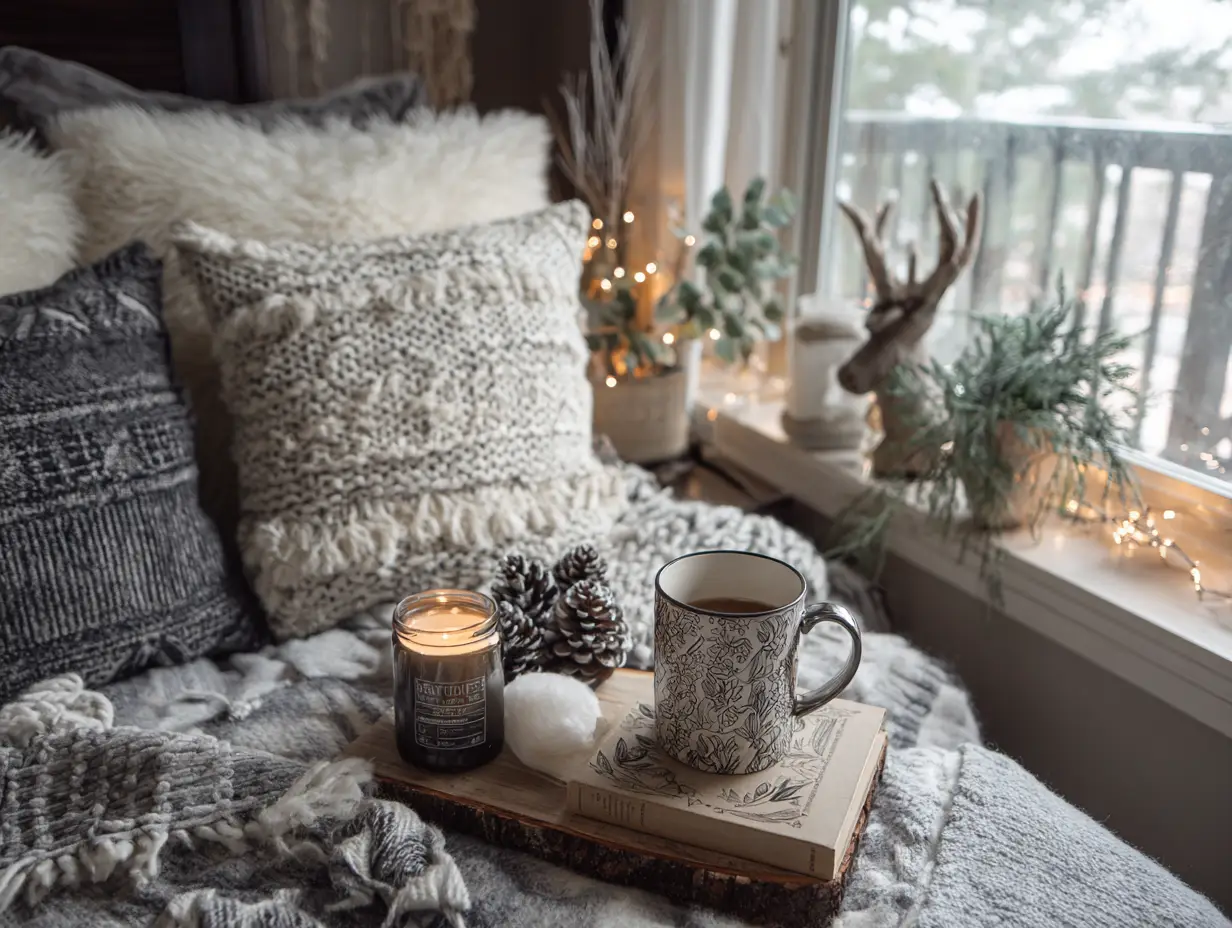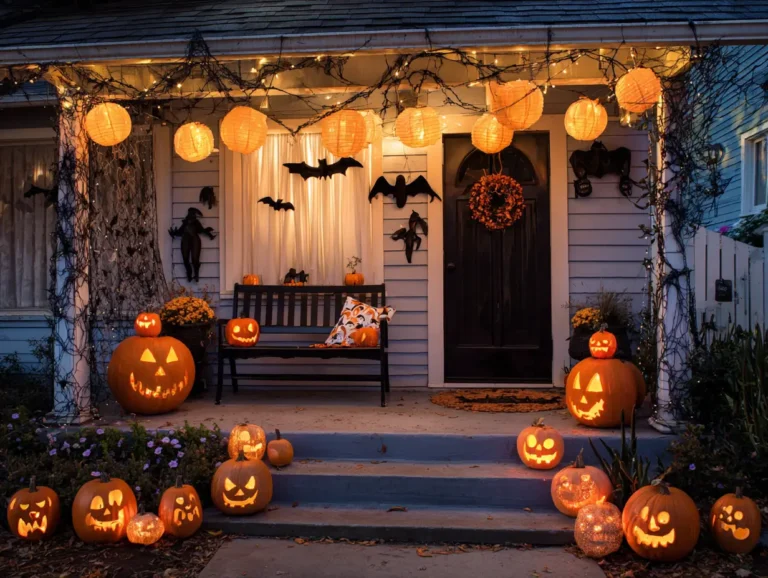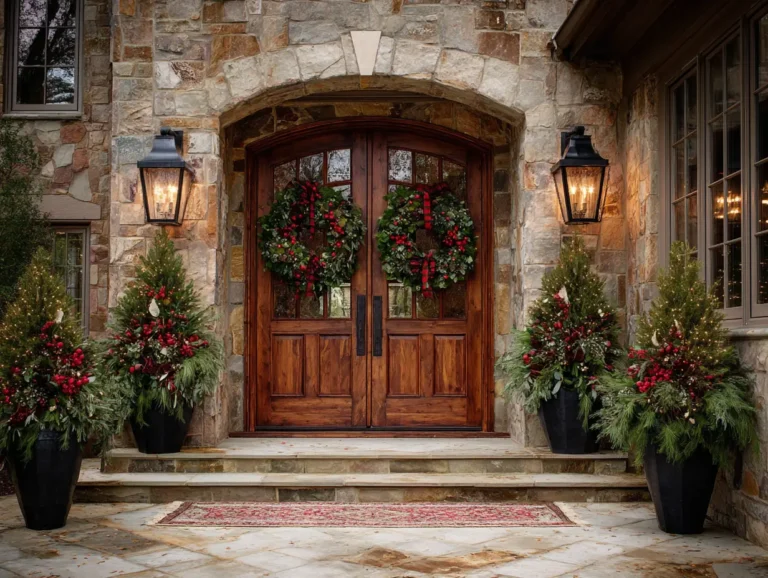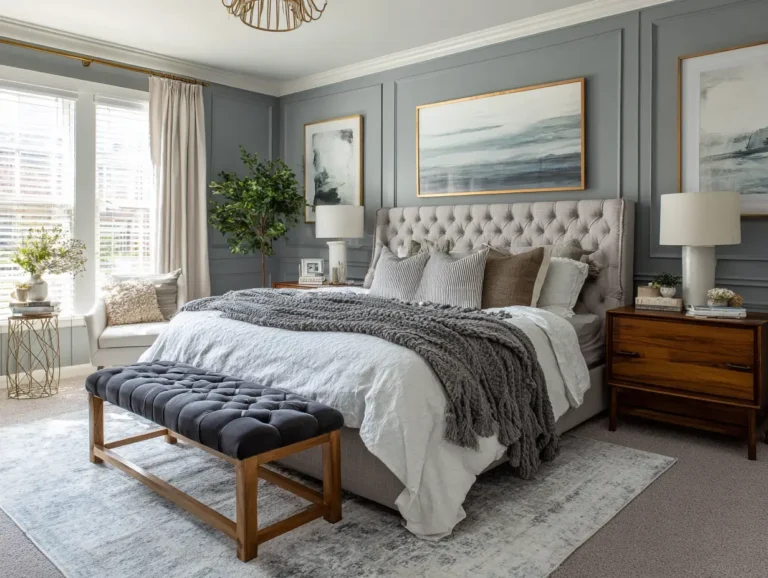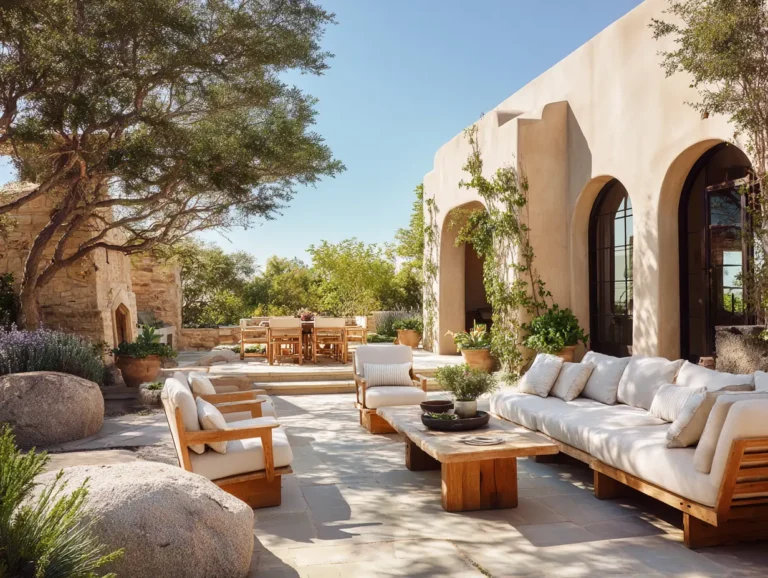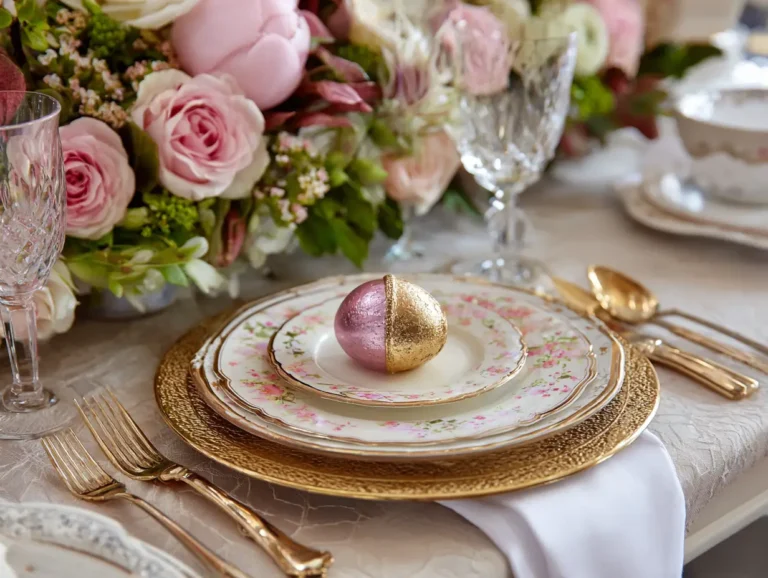12 Winter Hygge Decor Tips for Cozy Nights
When winter arrives, our homes become more than just a place to live—they transform into sanctuaries. The Danish concept of hygge (pronounced hoo-gah) embodies this feeling: a sense of coziness, warmth, and simple pleasures that soothe the soul. In the coldest months, hygge-inspired design can make even the longest nights feel inviting. Through thoughtful layering of textures, warm lighting, and intentional details, you can craft a winter retreat that feels both stylish and comforting.
If you’ve ever wanted your home to feel like a soft blanket wrapped around you, these 12 winter hygge decor ideas will show you how to design spaces that embrace the season while nourishing both body and mind.
1. Layer Textures for Warmth
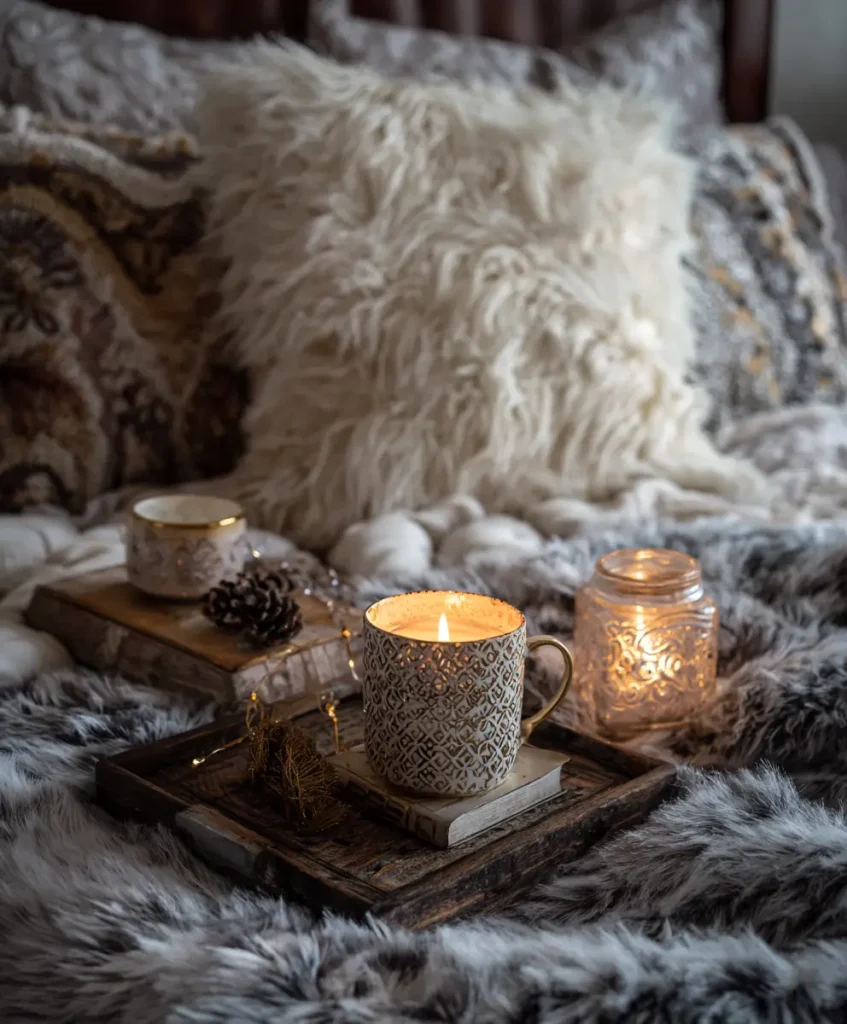
Hygge thrives on tactile comfort. Think soft knits, plush velvets, nubby wools, and smooth leathers—all layered together to create depth and coziness. Texture not only warms a room visually but also provides sensory richness that makes a space feel lived-in and welcoming.
Pro Tip: Mix three different textures in each space—like a chunky knit throw, a linen cushion, and a wool rug—for balance without clutter.
Example: A beige textured rug works perfectly in minimalist spaces, grounding the room while adding warmth.
2. Add Soft, Ambient Lighting
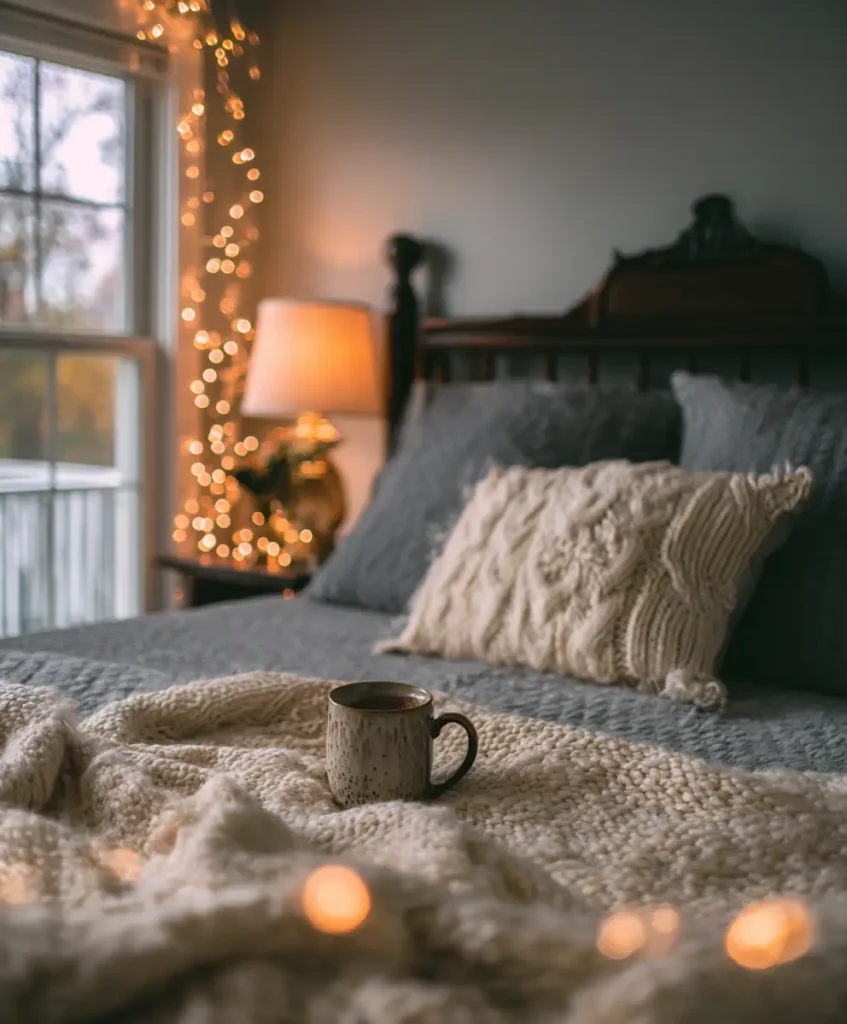
Lighting is central to hygge. Harsh overhead lights can feel cold in winter, while warm-toned lamps, string lights, and candles create intimacy. The psychology of lighting tells us that warm glows trigger relaxation, mimicking natural firelight that humans instinctively associate with safety and comfort.
Pro Tip: Use dimmable lamps or smart bulbs to shift from task lighting during the day to cozy mood lighting at night.
Example: A modern living room with fairy lights draped over shelving feels instantly magical.
3. Incorporate Natural Elements
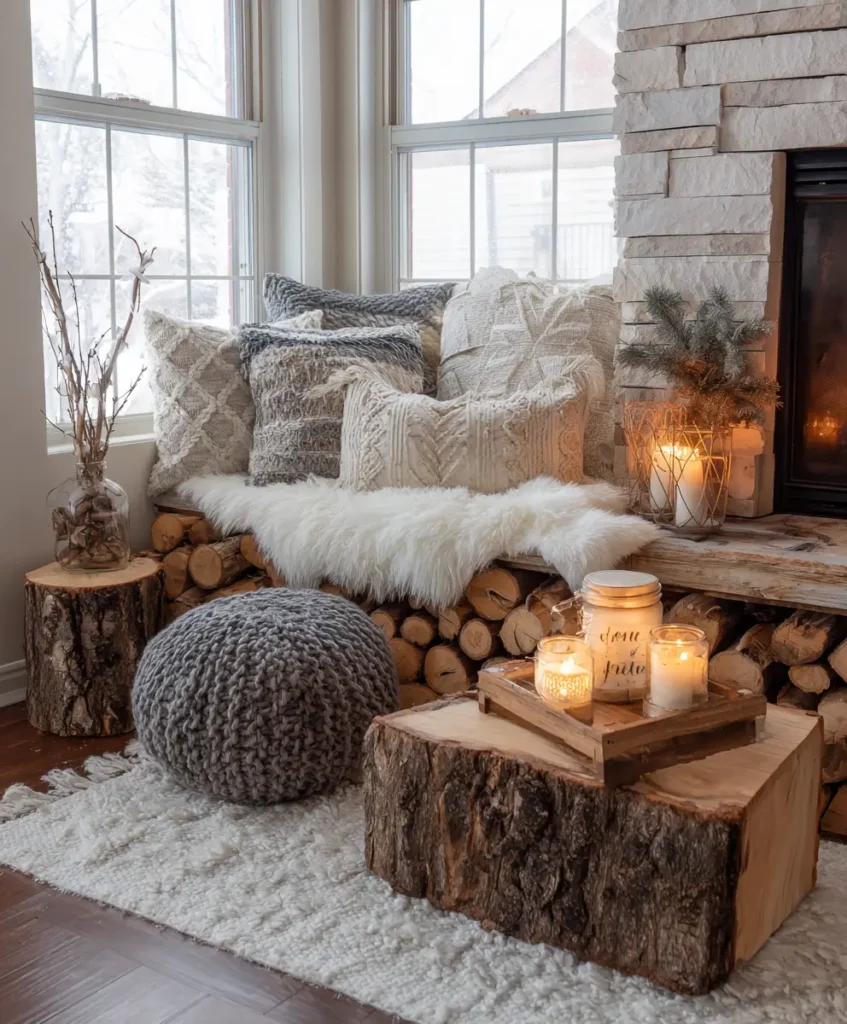
Bringing the outdoors inside connects us to nature—a cornerstone of Scandinavian-inspired design. Wood, stone, and greenery balance sleek modern interiors by adding organic warmth. Even small natural touches like pinecones or branches create a seasonal sense of calm.
Pro Tip: Place a wooden tray on your coffee table with candles and fresh eucalyptus for a simple hygge vignette.
Example: A rustic wood bowl filled with seasonal fruits doubles as décor and a nod to natural living.
4. Use Warm Neutral Colors
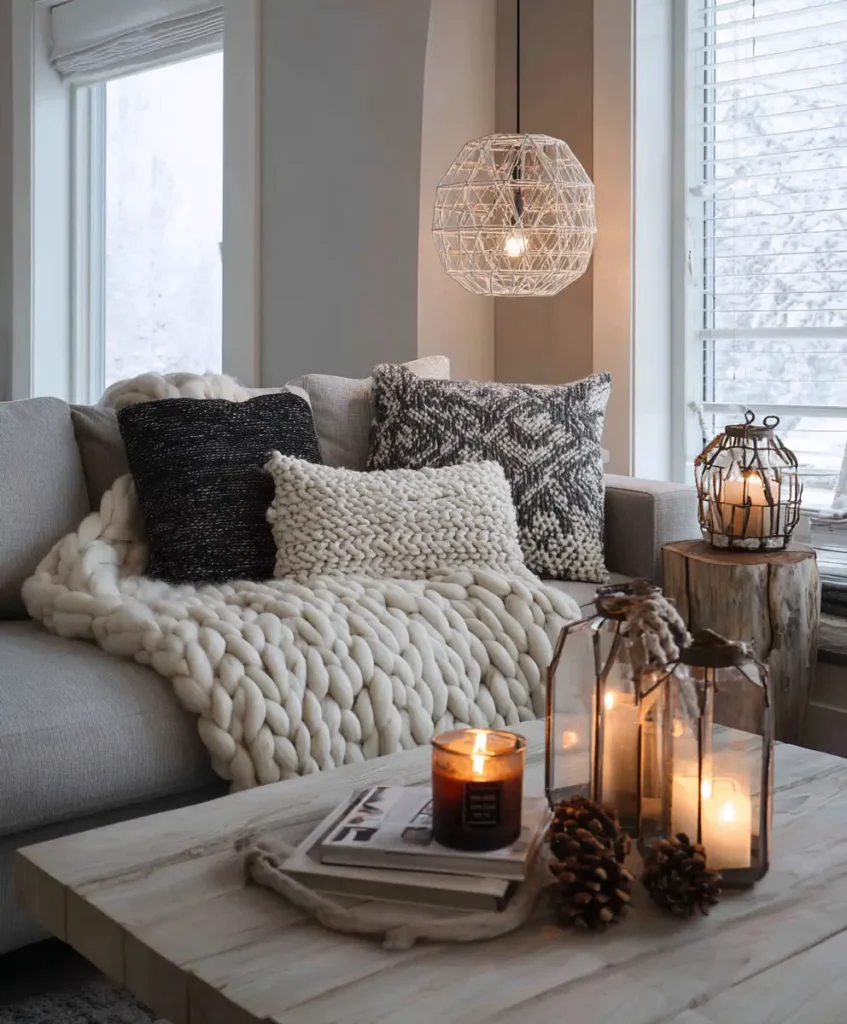
Color psychology plays a powerful role in how cozy a space feels. Warm neutrals like taupe, cream, camel, and soft gray provide serenity without overwhelming small spaces. They reflect light in winter’s darker months while maintaining a soothing backdrop for textured layers.
Pro Tip: Keep walls neutral and introduce deeper hues like burnt orange or olive green through pillows and throws.
Example: A cream sofa with camel-toned cushions creates understated elegance in a hygge-inspired home.
5. Create a Reading Nook
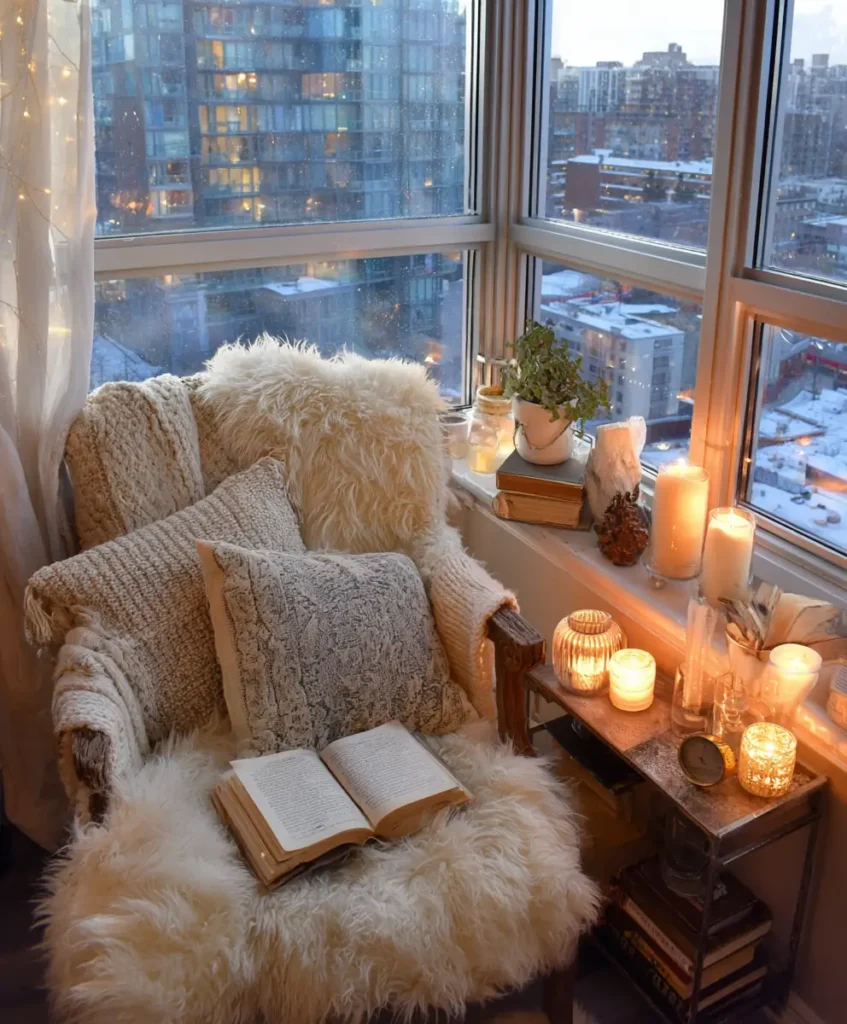
A hygge home isn’t just about décor—it’s about rituals. A reading nook offers a designated retreat for slowing down and savoring quiet moments. By carving out even a small corner with a comfortable chair, blanket, and lamp, you signal that this space is meant for rest and reflection.
Pro Tip: Add a basket for books and throws so your nook always feels ready to use.
Example: A window seat with layered pillows becomes the ultimate winter sanctuary.
6. Layer Rugs for Softness
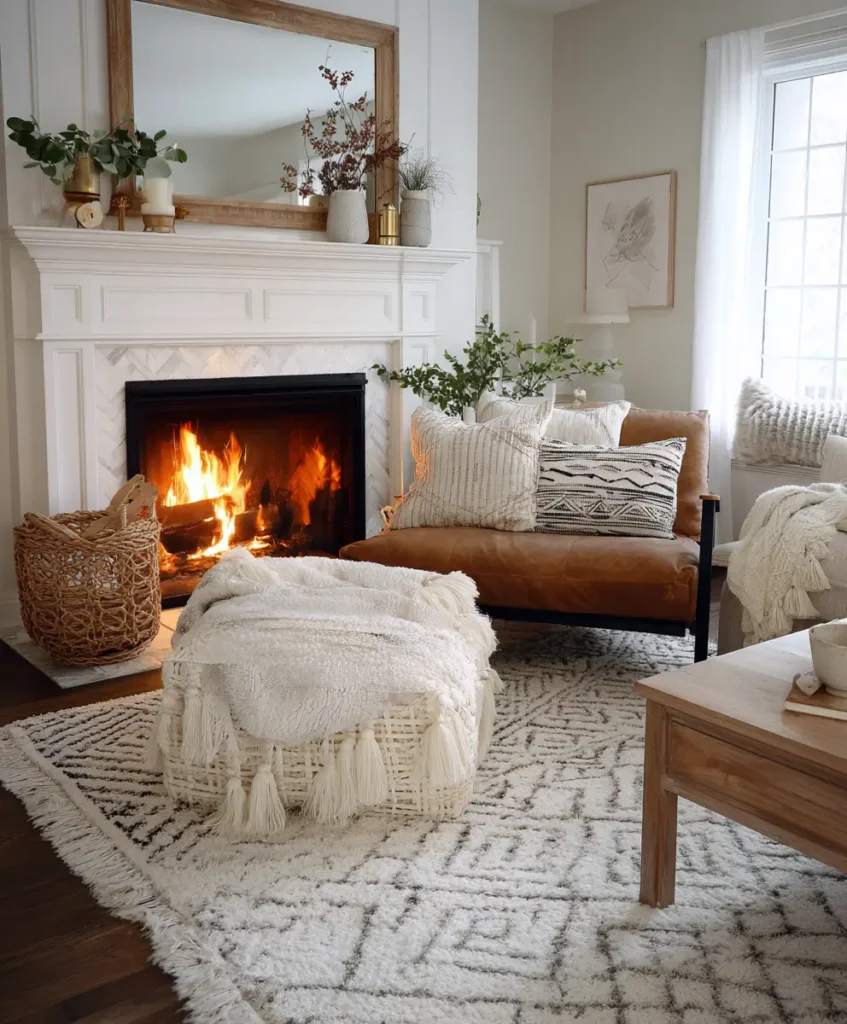
Flooring can feel icy in winter, but rugs provide both comfort and design appeal. Layering different sizes and materials creates depth while insulating against cold floors. In small space solutions, rugs also help define areas, making your living room feel organized and intentional.
Pro Tip: Place a fluffy sheepskin over a flat-woven rug for instant coziness.
Example: A neutral jute rug topped with a faux fur accent rug turns a dining nook into a hygge haven.
7. Embrace Candlelight
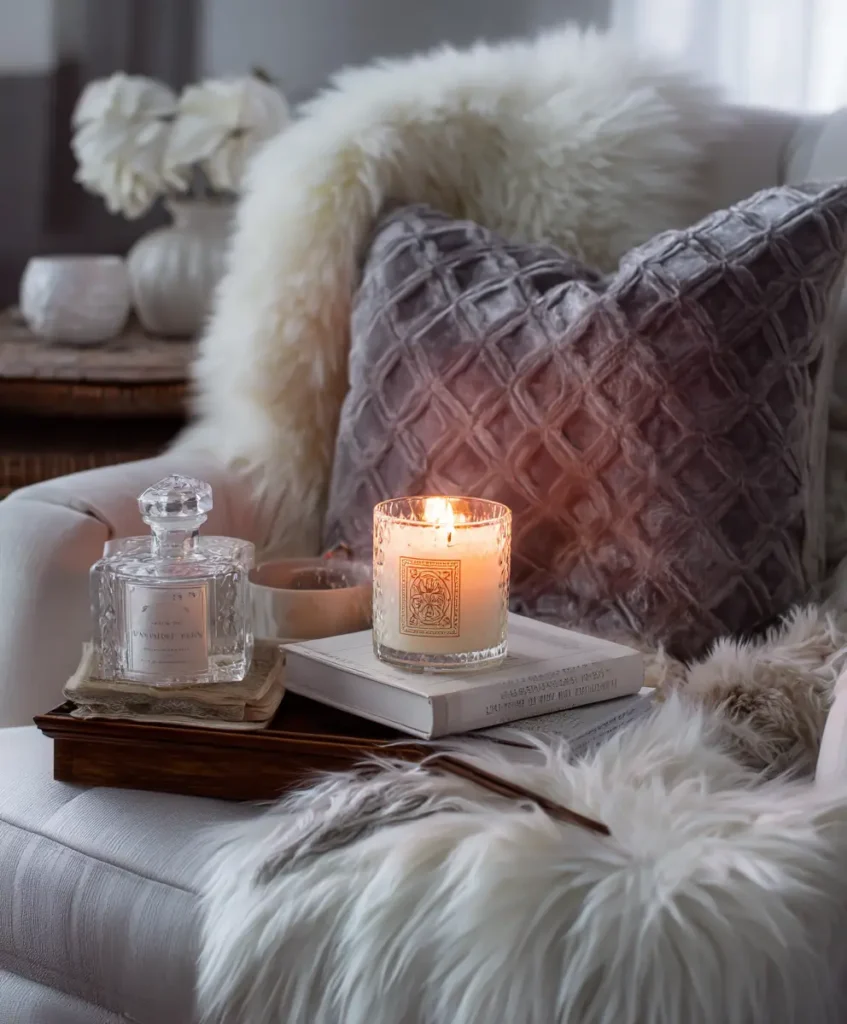
Candles are almost synonymous with hygge. The flickering glow evokes relaxation and slows the pace of a room, inviting mindful living. Scented candles add an additional sensory layer, with fragrances like cinnamon, vanilla, or pine evoking seasonal comfort.
Pro Tip: Group candles of varying heights on trays to create safe, stylish displays.
Example: A collection of tea lights along a windowsill makes long winter nights feel intimate.
8. Add Layers of Blankets and Throws
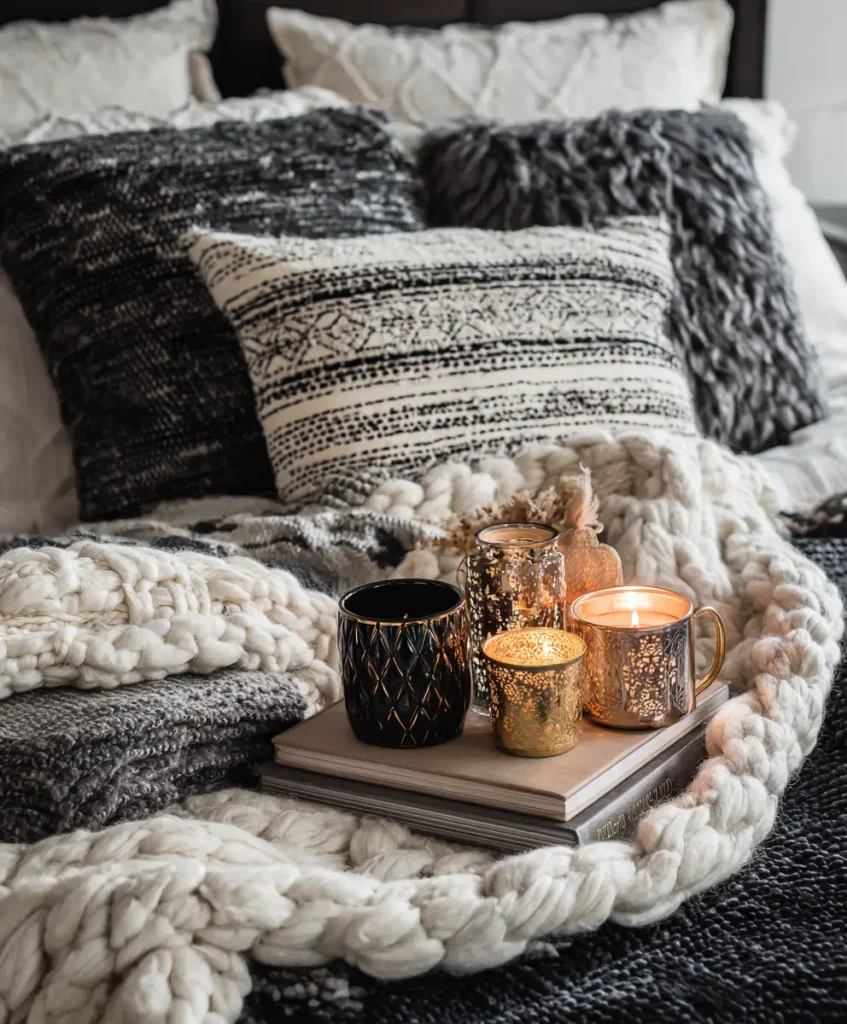
Winter décor isn’t complete without an abundance of cozy textiles. Draping throws over sofas, armchairs, and beds creates instant warmth. From a design perspective, layering textiles softens hard edges and adds inviting depth to interiors.
Pro Tip: Choose throws in wool, fleece, or faux fur for maximum coziness.
Example: A chunky knit throw casually draped over a modern sofa balances clean lines with softness.
9. Introduce Hygge Dining Rituals
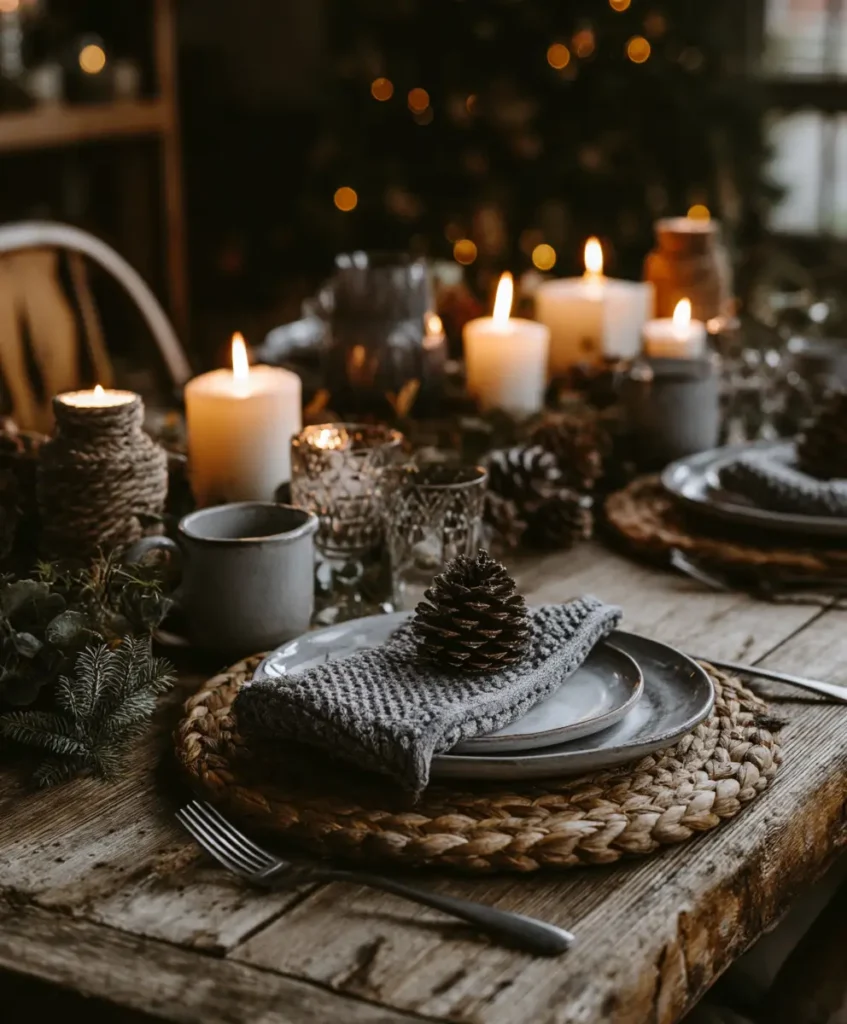
Winter is about gathering, and the dining table often becomes the centerpiece of connection. A hygge-inspired dining area should be intimate, warm, and layered with thoughtful details. Soft table linens, candles, and simple ceramics transform everyday meals into comforting rituals.
Pro Tip: Use neutral linens with seasonal accents like evergreen sprigs or wooden serving boards.
Example: A cream linen runner with small votive candles makes even a weekday dinner feel special.
10. Display Sentimental Objects
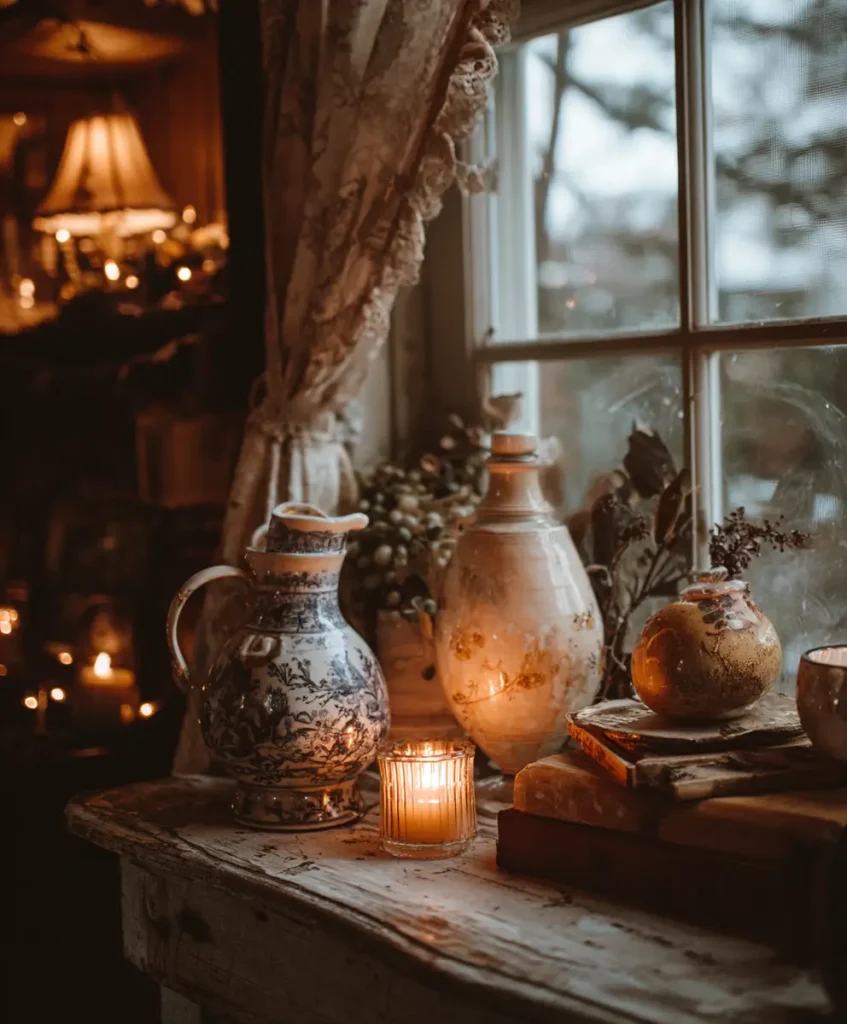
Hygge celebrates meaning as much as aesthetics. Surrounding yourself with objects that tell a story—a family photo, a handmade mug, a vintage clock—infuses your home with emotional warmth. These personal touches connect us to our past while grounding us in the present.
Pro Tip: Rotate sentimental pieces seasonally so they stay fresh and intentional.
Example: A framed holiday photo displayed on a console feels authentic and heartfelt.
11. Soften with Curtains and Drapes
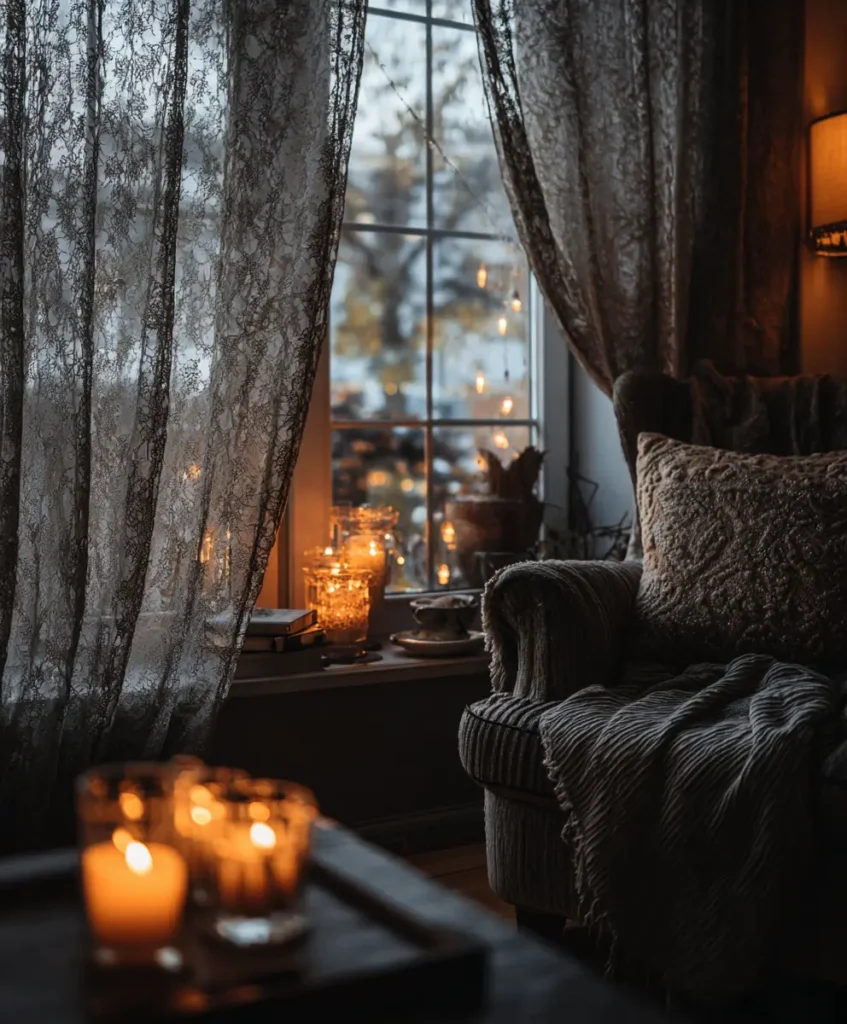
Windows are often overlooked in winter decor, but fabric treatments can dramatically increase coziness. Sheer curtains paired with heavier drapes provide flexibility: they soften natural light during the day and insulate against evening chill. From a design perspective, flowing fabrics also add softness to structured rooms.
Pro Tip: Opt for floor-to-ceiling drapes in warm neutrals to elongate small rooms.
Example: Cream linen curtains layered with velvet drapes create a luxurious hygge vibe.
12. Carve Out Space for Togetherness
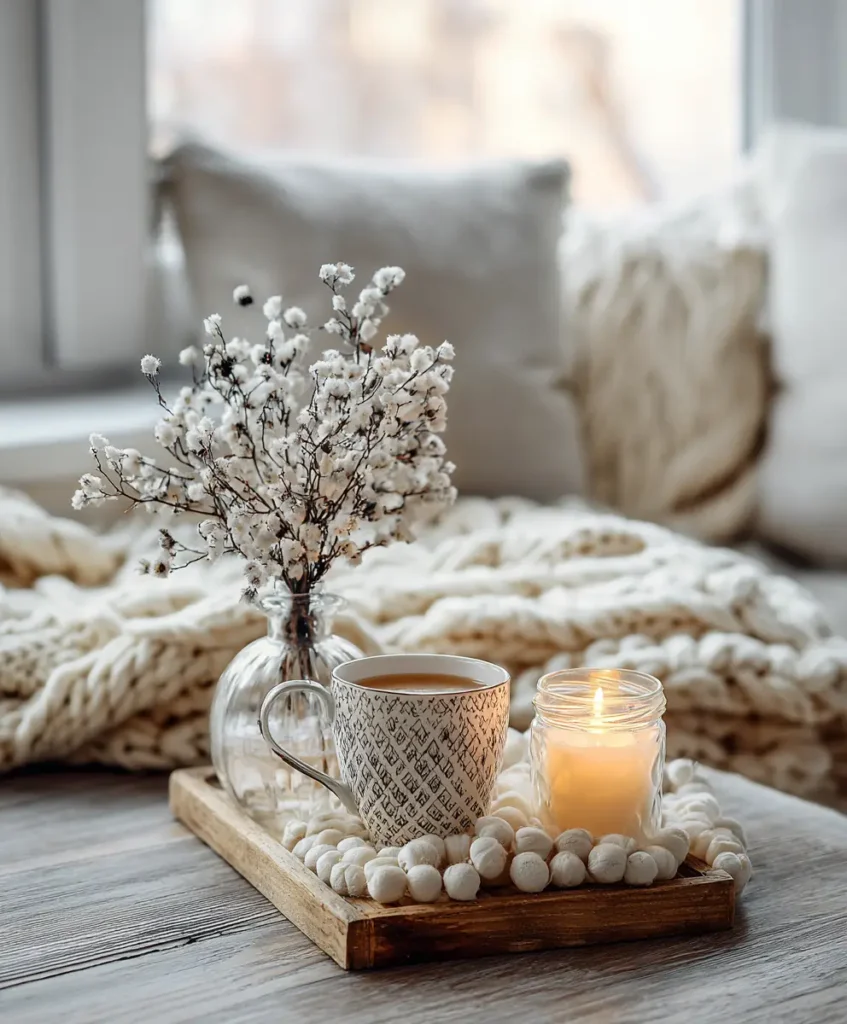
At its core, hygge is about connection. Designing spaces that invite gathering—whether a board game night in the living room or hot cocoa by the fire—creates warmth beyond decor. Arrangement matters: furniture pulled closer together fosters intimacy and conversation.
Pro Tip: Rearrange seating into circular or U-shaped layouts for easy connection.
Example: A small living room feels instantly cozier when sofas and chairs are angled inward around a central rug.
Final Thoughts
Hygge isn’t just about how your home looks—it’s about how it feels. By layering textures, adjusting lighting, and embracing natural elements, you can create a space that nurtures connection and calm all winter long. These tips prove that cozy can be stylish, and small changes can transform the everyday into something truly special.

